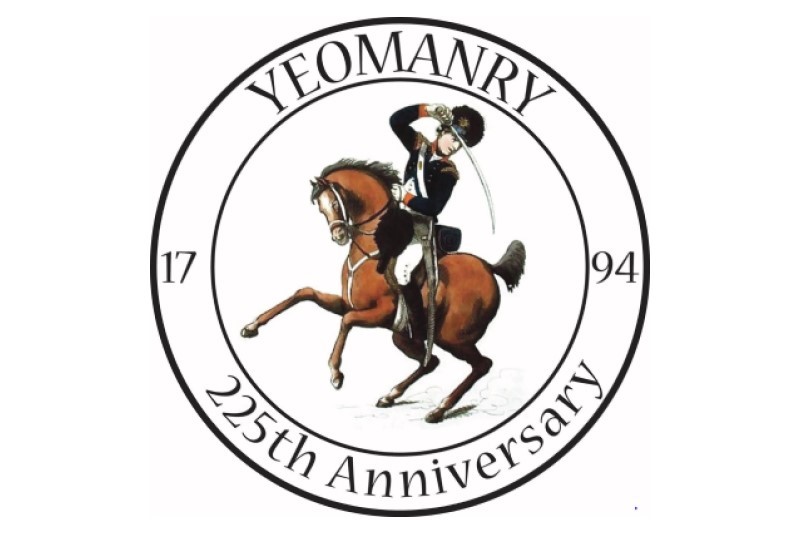
225 Years of the Yeomanry
The Reserve of the Royal Armoured Corps. 2019 has special significance for us, as it is the 225th anniversary of the formation of the first Yeomanry Regiments.
Colonel Yeomanry – Col Patrick Long TD
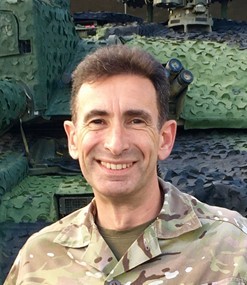
2019 has special significance for us, as it is the 225th anniversary of the formation of the first Yeomanry Regiments and our long history of providing a volunteer reserve for the nation, so it is wholly appropriate to commemorate reaching this historic milestone.
The Yeomanry, from the raising of the first troops of Yeomanry in 1794 in response to a threat from europe, to the Yeomanry of today - four strong units descended from a long line of renown antecedent regiments with illustrious histories. Our battle honours are proudly displayed on our four guidons. The latest awarded as recently as 2003, they stretch back into the past and are testament to the heroism of Yeomen at war.
From Fishguard in 1797, via the Boer War, two World Wars, the Gulf War and campaigns in Iraq and Afghanistan, right up to the enhanced forward presence in Estonia in 2019, the Yeomanry continues to support the United Kingdom in whatever form is required.
This year bears extra significance for us as our parent corps also commemorates its 80th anniversary.
In 1939, the regular cavalry regiments and the Royal Tank Corps were combined into what was described as a ‘loose association’ to form the Royal Armoured Corps (RAC). From 1939, Yeomanry regiments joined the RAC as they re-rolled into armour, forming a sizeable part of it by the end of WWII.
Although the number of Yeomanry Regiments has reduced from its armoured peak of 26 in 1947, we continue to be an essential part of the RAC. We form 4 out of the 14 RAC regiments of today and we have the only band in the RAC. In terms of headcount, we number 1598 out of the total of 7500.
We are fully woven into the fabric of the RAC and play a full part in the collegiate approach the RAC has adopted through its ‘RAC First’ programme - initiated to harness the strength of our individual regiments and act, speak and think as one organisation rather than 14 disparate ones.
We continue to exceed our mandated capability and support our paired regiments admirably. We have proven our expertise in mounted reconnaissance and the ability to crew the most technical of armoured vehicles.
Many historic parallels still chime today. We continue to represent a wide geographical spread with deep county roots. We still have to overcome shortfalls of kit and resources and just like 1794, we face uncertain times.
Of course, there are many new threats, as well as the re-emergence of some traditional ones and the pace of change has accelerated beyond recognition. However, through all of this, we remain robust, agile and capable.
The dedication, resolve and volunteering ethos of Yeomen is as strong today as throughout our 225 year history. Here’s to the next 225!
A Brief Guide to the Yeomanry – 1794 to 2019 – 225 years of service
Yeomanry history begins with the French declaration of war in 1793 upon the monarchies of Europe, when the British Government realised that the regular forces of the Crown would be inadequate to resist a French invasion. A non-regular or volunteer force was advocated and in 1794 Parliament passed an Act which regulated the raising of volunteer corps: the Lord Lieutenant of each county was invited to raise units of both cavalry and infantry. Infantry volunteers were drawn mainly from the ranks of the unskilled workers, while cavalry recruits came from landowners, farmers and tradesmen, and were thus styled Yeomanry.
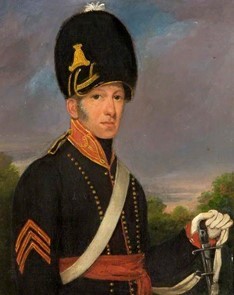
The first Yeomanry were formed into independent Troops, usually based on county towns. They used their own horses and paid for their own uniforms while the Government supplied weapons and equipment, and a small permanent staff. Their role was to act in time of invasion as mounted guides and a local mobile reserve, familiar with the geography of their own county. Their priorities were summed up by the motto frequently used by Yeomanry at the time "Liberty —Loyalty —Property", ie: Liberty —defence of the realm against foreign invaders; Loyalty —defence of the Crown against revolution; Property —defence of their own by those who had something to defend.
The only occasion when the Yeomanry was called upon to fulfil their role was at Fishguard in 1797 when the Castlemartin Yeomanry joined with the local militia in rounding up a French invading force and for doing so they received the only battle honour awarded for an action on British soil.
In the troubled times that followed the end of the Napoleonic Wars, the Yeomanry acted as a form of gendarmerie under the control of local magistrates and were frequently called upon to quell civil unrest, a role for which they were well suited because of their local knowledge and their ability to assemble and disperse quickly. During fifty years of duties in aid of the civil power, only at Peterloo (where the Yeomanry were undeservedly blamed for the many deaths and injuries) was there any significant loss of life; on innumerable other occasions the mere presence of an armed disciplined body of men defused situations which might otherwise have got out of control.
Two factors altered the role of the Yeomanry. The development of effective police forces in the 1840s meant that the Yeomanry were no longer required to keep the peace and further fears of French invasion led to the formation in 1859 of the Rifle Volunteer Corps aimed specifically at the rapidly expanding middle classes and townspeople. These were seldom to be found in the Yeomanry that still recruited from its traditional rural bases. In the second half of the nineteenth century therefore the Yeomanry became a pillar of county society, better known for their splendid uniforms than for any military prowess. They did not take soldiering too seriously and tended not to train regularly, meeting only for Annual Camp and for occasional reviews and field days. They were committed to serve only in case of foreign invasion and then only within the confines of their own county. Their strength varied in different parts of the country but by 1899 the 38 regiments of Yeomanry were organised into 110 Troops in all, each Troop comprising 5 officers and 100 men.
In 1899 the defeats of the British Army in South Africa at the hands of the Boers revealed the need for a mobile force able to ride and shoot well and to challenge the Boers at their own form of
warfare. By their terms of service, the Yeomanry were unable to serve abroad but their members volunteered in large numbers to join the newly established Imperial Yeomanry where they were formed into companies, many with affiliations to existing Yeomanry regiments. They were called upon mainly to guard extended lines of communication where their role encompassed months of patrolling and occasional bursts of intense action, vicious ambush or minor skirmish.
The Boer War gave the Yeomanry a new lease of life. By 1905 fourteen new regiments had been raised increasing the total to fifty two. All regiments were trained and equipped as mounted infantry rather than as cavalry and the rifle became their main weapon. By 1908 further reforms incorporated the Yeomanry into the Territorial Force and the arm was organised into fourteen cavalry brigades and fourteen divisional cavalry regiments.
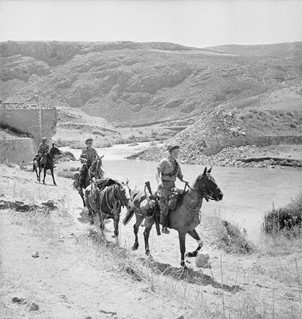
On the outbreak of the First World War in 1914, most Yeomanry regiments were initially sent to the East Coast to provide a mobile reserve in case of invasion by the Germans, considered a real possibility at the time. For many their first taste of action came in Gallipoli where they fought against the Turks as infantry, having left their horses in Egypt. In 1917-18 they rejoined their horses and served under Allenby in the Palestine campaign, the last major successful campaign by British cavalry. In 1918 manpower shortages on the Western Front meant that the remaining mounted units again lost their horses and were converted into battalions of their associated county infantry regiment or into machine gun battalions and saw service in France and Flanders in the last year of the war.
On the revival of the Territorial Army (TA) in 1920, only fourteen Yeomanry regiments were required as cavalry. The remainder were offered the choice of becoming artillery (with the attraction that they still used horses), or armoured car companies, or to re-role as signal regiments.
After an arid period in the 1930s when the army in general and the TA in particular were starved of equipment and financial support, the Munich crisis of 1938 saw a revival of fortune with a requirement to double the size of the TA.
On the outbreak of the Second World War in 1939, the horsed Yeoman regiments found themselves once more in Palestine with little action. Changing to a more operational role in armour, after some early disasters (often attributed to too much "Yeomanry Spirit") the Yeomanry soon proved themselves, notably in 7 Armoured Division (Desert Rats). Yeomanry regiments were among the first to land in Normandy on D-Day in 1944 and others served successfully in artillery and signals on many fronts.
The revival of the TA in 1947 saw the first of a succession of reorganisations that resulted in twenty six Yeomanry regiments serving in the Royal Armoured Corps and twenty four in the Royal Artillery. In the major reorganisation of 1967 many of the surviving regiments were reduced to squadron strength and merged into new regiments, such as The Royal Yeomanry each of whose five squadrons retained its former Yeomanry regimental identity, a concept that was repeated equally successfully in other arms.
In recognition of their loyal service in defence of their country, in 1994 on the occasion of the 200'" anniversary of the founding of the Yeomanry, Her Majesty Queen Elizabeth II reviewed the thirty-nine surviving Yeomanry squadrons and batteries and the First Aid Nursing Yeomanry in Windsor Great Park.
In 2019 the Yeomanry consisted of the following units in the Royal Armoured Corps: the Royal Yeomanry; the Royal Wessex Yeomanry, the Queen's Own Yeomanry; and, the Scottish and North Irish Yeomanry. In addition, there were the following yeomanry units in the wider Reserve element of the Army: a regiment and two batteries in the Royal Artillery; a troop in the Royal Engineers; a regiment and four independent squadrons in the Royal Signals; a squadron in the Army Air Corps; and, four yeomanry-titled squadrons in the Royal Logistics Corps. The First Aid Nursing Yeomanry (Princess Royal's Volunteer Corps) continues to provide response teams in support of the civil and military authorities.
Today's Yeomanry takes pride in its professional attitude to training while retaining its traditional values and historical associations; it offers to civilians of today a valuable opportunity to undergo demanding and challenging training in military, leadership and management skills. As a result of the Reserve Forces Act, which came into force in the 1990s, many Yeomanry soldiers now take the opportunity to serve for periods of 6 to 24 months alongside their regular counterparts in operational theatres around the world, and in so doing they echo the spirit and dedication of their forbears of the Imperial Yeomanry a century ago.
Over the years, Yeomanry Regiments have formed up when there was a requirement, reorganised, and stepped down when the threat had reduced. Amalgamations, disbandment and reinvention have all become the norm. Regiments have turned their hand at many roles, be it Infantry, Armour, Cavalry, Artillery or more. The last two major reorganisations in 1967-71 and 2012 have set the environment that we find now.
The Royal Yeomanry
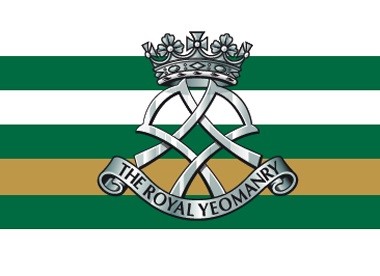
The Royal Yeomanry was formed in 1967 and was for four years the only RAC yeomanry regiment. Throughout the Cold War it had a warfighting role in NATO. In 2003, two of its squadrons and its RHQ deployed for the Iraq War. Formed troops of the Royal Yeomanry were attached to 16 Air Assault Brigade and 3 Commando Brigade for the invasion, entering Iraq at the very tip of the spear. Consequently, the Royal Yeomanry was awarded the battle honour “Iraq 2003”: the only battle honour awarded to an Army Reserve unit since the second world war.
A (Sherwood Rangers Yeomanry) Squadron
B (Staffordshire, Warwickshire and Worcestershire Yeomanry) Squadron
C (Kent and Sharpshooters Yeomanry) Squadron
D (Shropshire Yeomanry) Squadron
E (Leicestershire Yeomanry) Squadron
C&S (Command and Support) (Westminster Dragoons) Squadron
The Royal Yeomanry Band (The Inns of Court and City Yeomanry (The ‘Devil’s Own’))
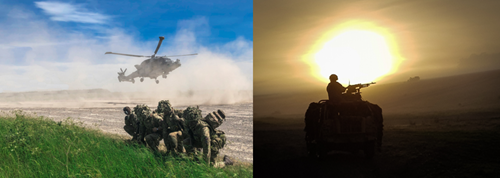
The Regiment is rolled as Light Cavalry on RWMIK and JACKAL and is part of 7th Infantry Brigade. It is paired with 1st the Queens Dragoon Guards based in Swanton Morley. Last year they provided 14 officers and soldiers in support of QDG on Operation CABRIT in Estonia and Poland. This year they conducted their own combined arms battlegroup exercise, YEOMAN OVERLORD, and provided a squadron as the Royal Honour Guard at the official D-Day commemorations at Bayeux War Cemetery. Next year they will exercise integrated with QDG for the first time, on Ex WESSEX STORM, before deploying with them on operations again.
The Royal Wessex Yeomanry
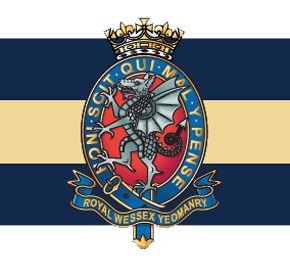
The Royal Wessex Yeomanry was formed in 1971 from the amalgamation of 4 west country Yeomanry Regiments. In 2012, a second Wiltshire Squadron was transferred from the Royal Yeomanry.
A (Dorset Yeomanry) Squadron
B (Royal Wiltshire Yeomanry) Squadron
C (Royal Gloucestershire Hussar) Squadron
D (Royal Devon Yeomanry) Squadron
Y (Royal Wiltshire Yeomanry) Squadron
The Regiment is the Army’s only Reserve Armoured Regiment, operating on Challenger 2 Main Battle Tanks. It supports the 3 Regular Armoured Regiments in 3 (UK) Division, The Queens Royal Hussars, The Kings Royal Hussars and the Royal Tank Regiment. Although Divisional troops, it is currently under command of 1st Armoured Infantry Brigade. During the last year, Wessex Yeomen have deployed to Estonia, Canada and Oman in support of UK and NATO operations and training.

Heavily focussed on building and maintaining competency and currency on the Challenger 2, the RWxY training programme includes annual live firing packages and field training; in the worst case, the Regiment is required to provide formed Troops of tanks to augment the Regular Regiments.
The Queen’s Own Yeomanry
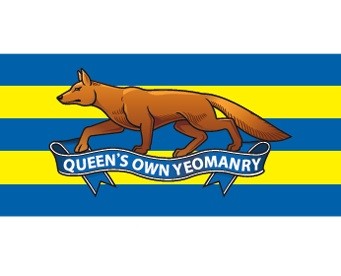
The Queen’s own Yeomanry was formed in 1971, when four Yeomanry Regiments from across the Midlands, North of England and South West Scotland came together to form the 2nd Yeomanry Armoured Car Regiment, later renamed the Queen’s Own Yeomanry. With further reorganisation in 2012, the Regiment have the following Squadrons straddling the Pennines in the north of England;
A (The Queen’s Own Yorkshire Yeomanry) Squadron
B (The Duke of Lancaster’s Own Yeomanry) Squadron
C (The Cheshire Yeomanry) Squadron
C&S (Command and Support) (The Northumberland Hussars) Squadron

The Regiment is currently in role as Light Cavalry, in the process of converting from RWIMK to JACKAL, and is part of the 4th Infantry Brigade. The QOY is paired with the Light Dragoons and have provided support for them on Ex. DIAMONDBACK in the USA; the Regiment also stands ready to provide support in 2020 on Op CABRIT and Op TOSCA. The flexibility and adaptability of the QOY continues to be demonstrated as the Regiment focuses on deploying a dismounted sub-unit to Croatia in September for Ex SAVA STAR 19.
The Scottish and North Irish Yeomanry
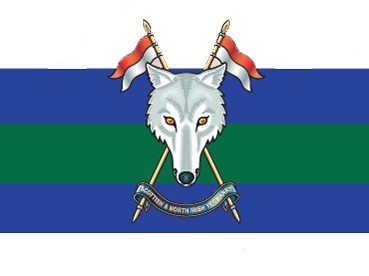
The Scottish and Northern Irish Yeomanry is our newest regiments. It entered the Army’s order of battle on 31 October 2014. Its four Squadrons are formed from the following antecedent Regiments;
A (The Ayrshire (Earl of Carrick’s Own) Yeomanry) Squadron
B (The North Irish Horse) Squadron
C (The Fife and Forfar Yeomanry / Scottish Horse) Squadron
E (Lothians and Border Yeomanry) Squadron
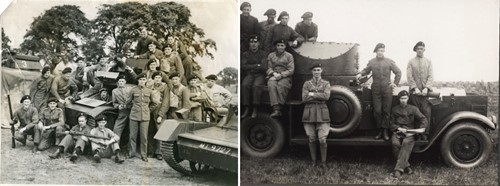
The regiment is rolled as Light Cavalry, and currently operates on the RWMIK, but is due to receive its first JACKAL by the end of July. Regimental Headquarters is in Edinburgh in 51 (Highland) Brigade and it closely paired with the Royal Scots Dragoon Guards based in Leuchars. The Regiment has recently provided troops on deployment to both Poland and Estonia, as well as supporting the SCOTS DG training on Salisbury Plain. 2020 main focus will be training on their new JACKALs.
Role of Light Cavalry
The Light Cavalry is principally a reconnaissance capability, and due to the light nature of its low profile platforms, Jackal and R-WMIK, is rapidly deployable and capable of operating at reach and over extended duration. The open architecture of the Light Cavalry platforms demands a different approach to protection – primarily stealth, but backed up by the means to integrate indirect fire as well as harnessing the potential of the Influence Troop in each reserve Light cavalry regiment. Light Cavalry is a highly versatile capability, employable across the spectrum of conflict and each Light Cavalry Yeomanry regiment is tasked to provide a deployable squadron as well as individual reinforcements and is closely integrated with its regular paired regiment.
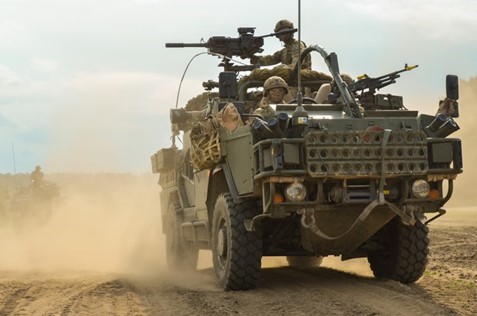
Role of Armour Reinforcement
The Armoured Reinforcement Regiments role changed in 2012 from training gunners and loaders to include training in all crew positions. The crews work towards being full armoured crewmen on Challenger 2, a not insignificant commitment in time, building up to crew commander. Courses focus on annual two week training periods, but some require up to 6 months attachments and a career break from civilian life.
The training year consists of weekend continuation training in crew positions, coming together for the high readiness crews to fire Annual Crew Tests. Time in the field is focused on crew and troop training, with Squadron training normally being conducted virtually or plugged in to one of the regular Regiments. Overseas training to the US National Guard or to BATUS / Oman provide longer periods in role and much useful experience of armoured warfare. Each year, the Armoured Reinforcement Regiment is tasked to provide 8 crews fit for role, this year, the RWxY provided 11 crews fit for mobilisation and 36 crews trained and competent.
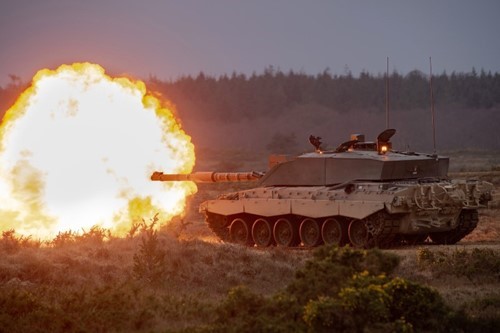
Posted: Sunday, 21 July 2019